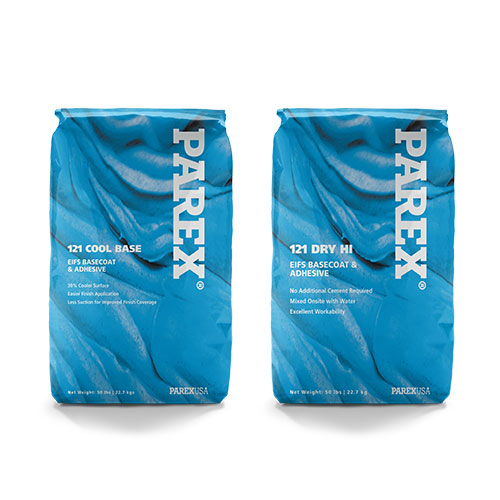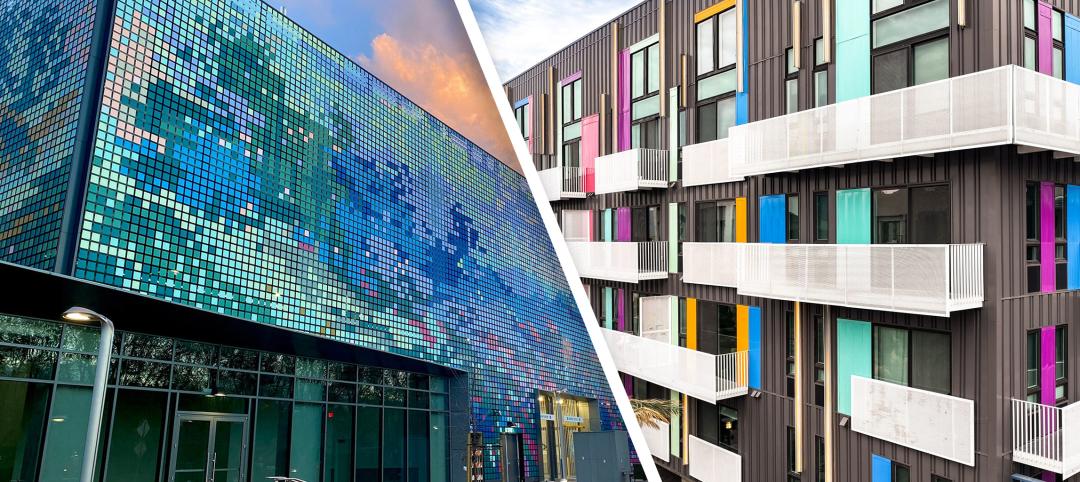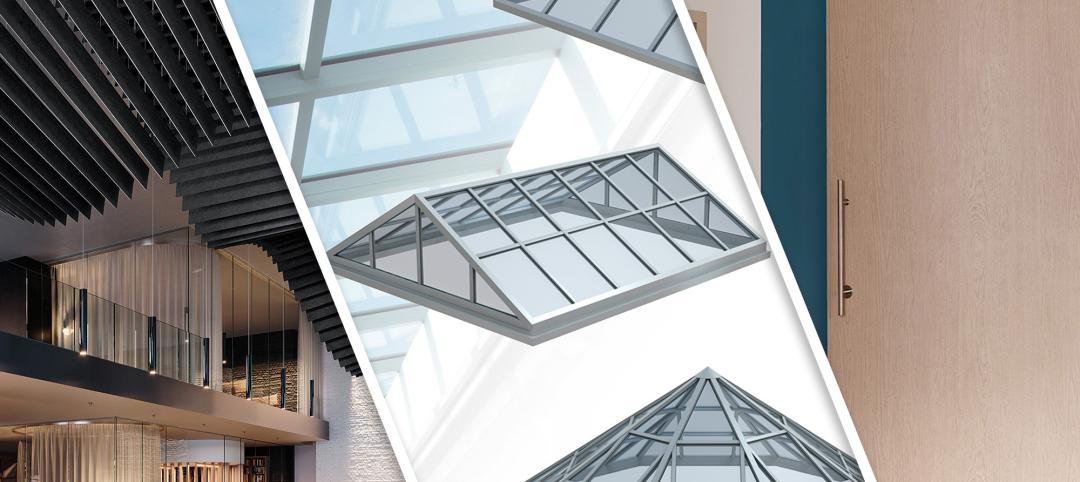Parex USA, Inc., the parent company of leading building material brands; Parex, Teifs, LaHabra, El Rey, and Merkrete, unveils two new Parex EIFS basecoats & adhesives – 121 Cool Base and 121 Dry HI (High Impact). Designed with the contractor in mind, the two new products boast extreme coolness and unsurpassed strength.
121 Cool Base is a premium, white EIFS basecoat and adhesive that is incomparable in the industry. It produces a 30 percent cooler basecoat temperature than typical basecoats & adhesives, which results in less suction and hydration when a final finish is applied. This technology allows for improved finish coverage as well as a faster and easier finish application.
“With the potential of improved finish coverage and ease of finish application, Parex’s new 121 Cool Base is set to make a big impact in the market,” said Heidi Larsen, Parex USA Product Manager. “When we presented a sneak peak of this product to contractors during our annual meeting, it was received with enthusiasm and overwhelming interest. Everyone was amazed at the drastic temperature differences between 121 Cool Base and standard EIFS basecoats & adhesives.”
Parex also introduces 121 Dry HI – a high performance EIFS basecoat and adhesive that is fortified with a unique blend of raw materials for increased impact and puncture resistance. It yields up to 30 percent better impact resistance (compared to standard EIFS basecoats & adhesives). 121 Dry HI is formulated for enhanced workability and provides easier application. This product is ideal for ground floors and other areas where greater impact resistance is required.
“In addition to providing 30 percent more impact resistance, 121 Dry HI also helps achieve higher ASTM/EIMA impact classifications,” said Larsen. “Typically, to achieve a “High” impact classification, a High Impact mesh (15 oz.) plus an additional layer of Standard Mesh (4.5 oz.) is required. Now, you can achieve a “High” impact classification utilizing a single layer of Intermediate Mesh (12 oz.) embedded in 121 Dry HI.” This system greatly reduces material and labor costs.
121 Cool Base and 121 Dry HI are one-component, polymer-modified, cement based dry products that are used as an adhesive to adhere EPS boards to existing substrates, a basecoat to embed reinforcing mesh and a leveler in Parex EIF Systems. Both 121 Cool Base and 121 Dry HI are shipped in 50 pound bags. Coverage, mixing instructions and limitations can be found in the Product Data Sheet at www.parex.com.
Related Stories
Products and Materials | Aug 31, 2023
Top building products for August 2023
BD+C Editors break down 15 of the top building products this month, from frameless windscreens to smart fixture mount sensors.
Transportation & Parking Facilities | Aug 23, 2023
California parking garage features wind-activated moving mural
A massive, colorful, moving mural creatively conceals a newly opened parking garage for a global technology company in Mountain View, Calif.
Products and Materials | Jul 31, 2023
Top building products for July 2023
BD+C Editors break down 15 of the top building products this month, from cleanroom doors to window storm protection systems.
Sponsored | Fire and Life Safety | Jul 12, 2023
Fire safety considerations for cantilevered buildings [AIA course]
Bold cantilevered designs are prevalent today, as developers and architects strive to maximize space, views, and natural light in buildings. Cantilevered structures, however, present a host of challenges for building teams, according to José R. Rivera, PE, Associate Principal and Director of Plumbing and Fire Protection with Lilker.
Cladding and Facade Systems | Jun 5, 2023
27 important questions about façade leakage
Walter P Moore’s Darek Brandt discusses the key questions building owners and property managers should be asking to determine the health of their building's façade.
Sponsored | Building Enclosure Systems | May 16, 2023
4 steps to a better building enclosure
Dividing the outside environment from the interior, the building enclosure is one of the most important parts of the structure. The enclosure not only defines the building’s aesthetic, but also protects occupants from the elements and facilitates a comfortable, controlled climate. With dozens of components comprising the exterior assemblies, from foundation to cladding to roof, figuring out which concerns to address first can be daunting.
Metals | Apr 19, 2023
Sherwin-Williams Coil Coatings releases new color forecast for architectural metal coatings
The Coil Coatings division of Sherwin-Williams has released its latest color forecast, FUSE, for architectural metal coatings. The report aims to inspire architects, product manufacturers and original equipment manufacturers (OEMs) in the coil and extrusion market over the next 3-5 years and beyond.
Cladding and Facade Systems | Apr 5, 2023
Façade innovation: University of Stuttgart tests a ‘saturated building skin’ for lessening heat islands
HydroSKIN is a façade made with textiles that stores rainwater and uses it later to cool hot building exteriors. The façade innovation consists of an external, multilayered 3D textile that acts as a water collector and evaporator.
Sponsored | Cladding and Facade Systems | Mar 15, 2023
Metal cladding trends and innovations
Metal cladding is on a growth trajectory globally. This is reflected in rising demand for rainscreen cladding and architectural metal coatings. This course covers the latest trends and innovations in the metal cladding market.
Cladding and Facade Systems | Dec 20, 2022
Acoustic design considerations at the building envelope
Acentech's Ben Markham identifies the primary concerns with acoustic performance at the building envelope and offers proven solutions for mitigating acoustic issues.

















